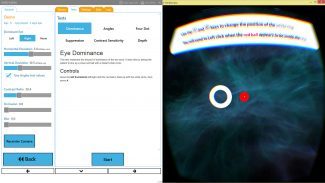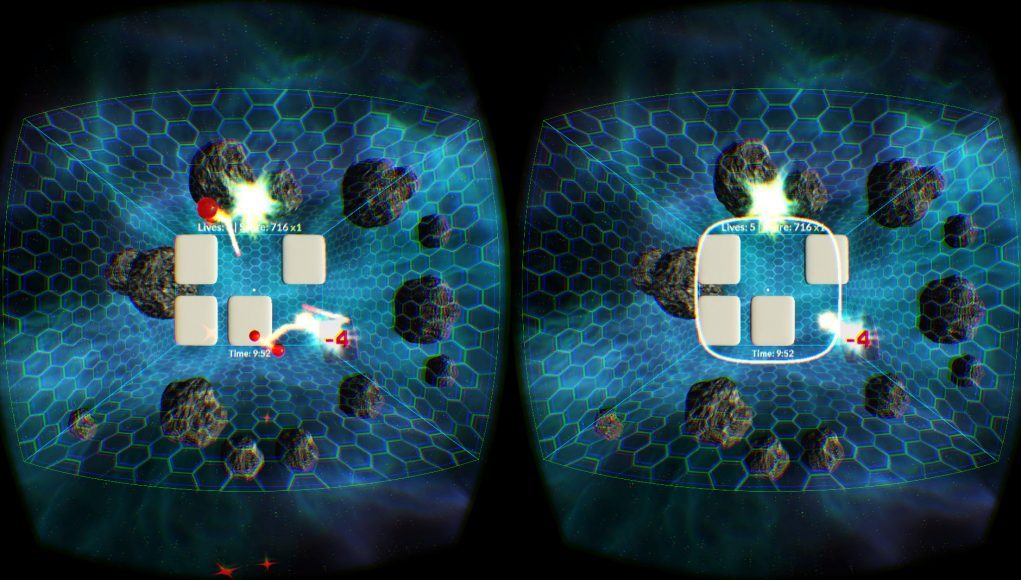Vivid Vision offers a virtual reality based treatment for lazy eye disorders. A new study published in the peer-reviewed BioMed Journal of Ophthalmology finds positive preliminary results which “indicate the potential for a new treatment for adulthood amblyopia.”
Founded by James Blaha in 2013, Vivid Vision (formerly called Diplopia) is a virtual reality treatment for lazy eye disorders—characterized by both eyes not cooperating normally to achieve sharp, binocular vision. The company raised $2.2 million in venture funding in May to broaden the offering of their treatment which is now available in 95 eye clinics, according to Vivid Vision.

Blaha started Vivid Vision after he says he developed a virtual reality game that he used to cure his own vision condition. But in order to become a properly validated treatment, and ensure its efficacy across a wide range of people, it takes more than anecdotal evidence.
A new preliminary study covered the treatment of 17 amblyopic subjects treated with the Vivid Vision software. The study was recently published in the peer-reviewed BioMed Journal of Ophthalmology and shows positive results with some patients in the study achieving sharper reading acuity, and measurable binocular vision where before they had none. Vivid Vision surmises the results:
The study included 17 adults who each used Vivid Vision for eight 40-minute sessions over two months. Less than 50% of subjects had measurable stereoscopic (3D) vision prior to treatment. After treatment, over 90% of subjects developed measurable stereoscopic vision and had an average gain of two lines on the acuity chart. “At first, at our local ophthalmological meetings they did not want to believe in the results of dichoptic training study. Nowadays more and more ophthalmologists are sending amblyopic patients to our clinic.” Said Juraj Halička from the UVEA Mediklinik and Jessenius faculty of Medicine.
The Vivid Vision lazy eye treatment works by increasing visual stimulation to the weak eye, while decreasing stimulation in the dominant eye (this is achieved with relative ease in a VR headset thanks to the device naturally showing separate images to each eye). This is done under the guise of immersive VR games where the player sees important game cues in their weak eye, leading their brain to lean more heavily on the information coming from that eye. Here’s a look at the type of gameplay patients experience (notice that these games rely heavily on the depth perception).
The published study, authored by Peter Žiak, Anders Holm, Juraj Halička, Peter Mojžiš and David P Piñero finds:
The preliminary results of our study indicate the potential for a new treatment for adulthood amblyopia. It is still necessary to perform a controlled clinical trial evaluating this potential treatment option for amblyopia, not only in adults, but also in children. Our results suggests that suppression of the amblyopic eye gates plasticity within the adult amblyopic visual cortex and therefore some degree of residual cortical plasticity can be unmasked in the adult brain. It should be also considered that motivational effects associated with video game plays may play also an important role in neuronal plasticity of the central nervous system.
The study calls existing lazy eye treatments—like using an eye-patch on the dominant eye, or blurring it with liquid drops—”penalizing therapies,” and suggests that not only is Vivid Vision’s virtual reality treatment potentially more effective with less treatment time, but also easier to keep patients motivated thanks to the engaging gamification of the treatment.







